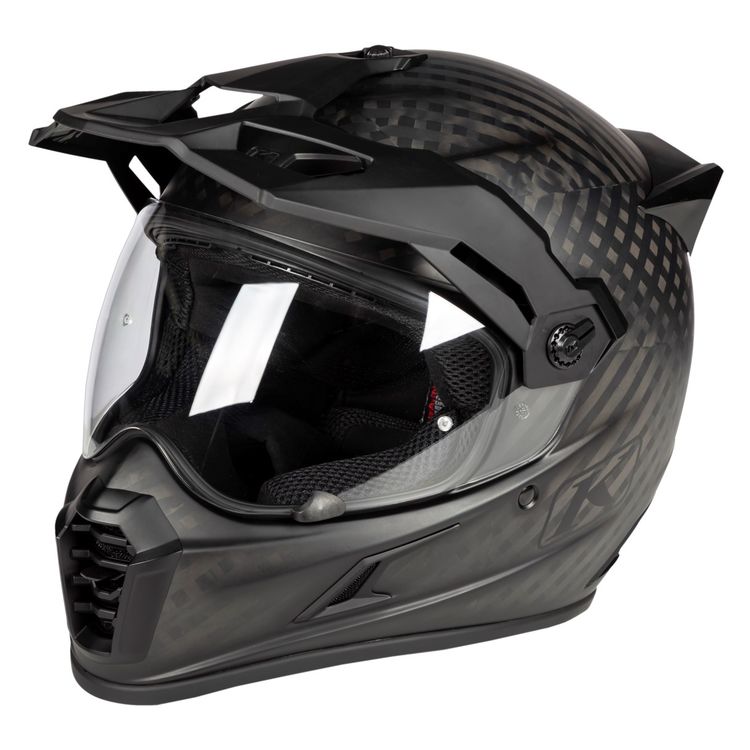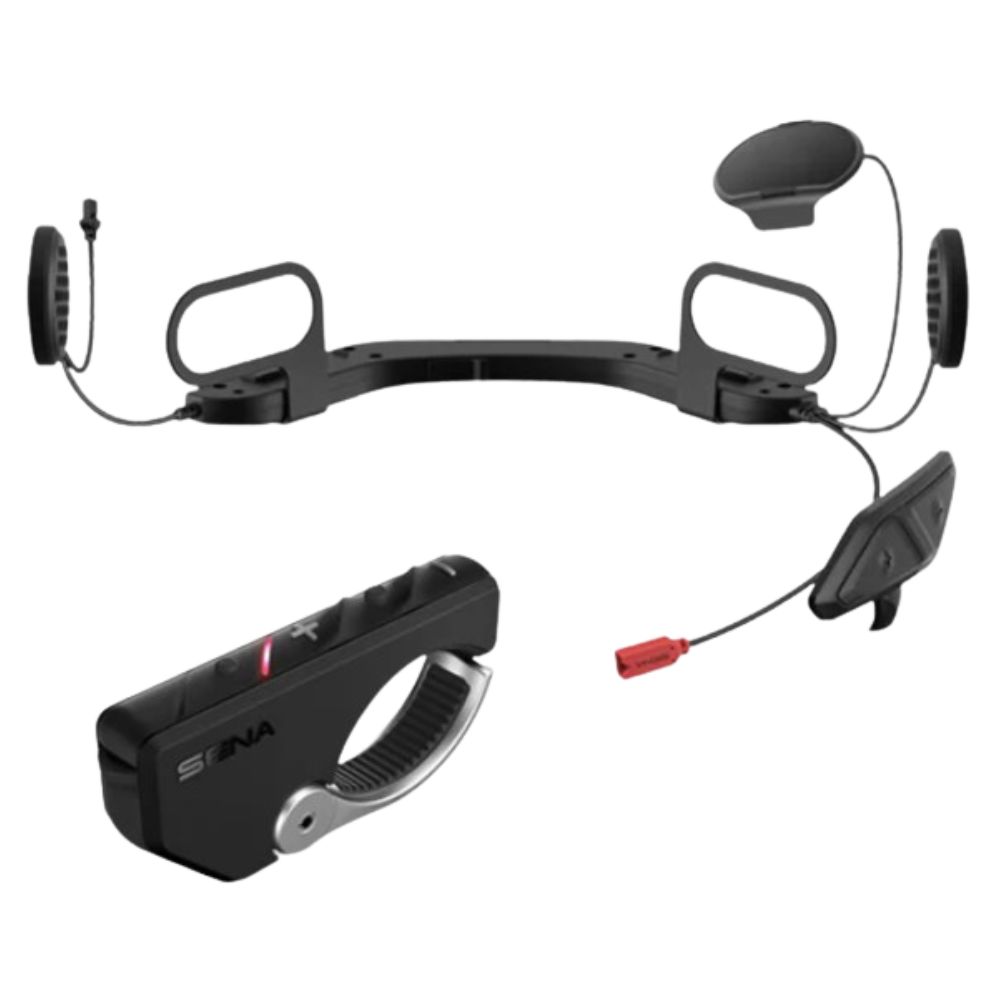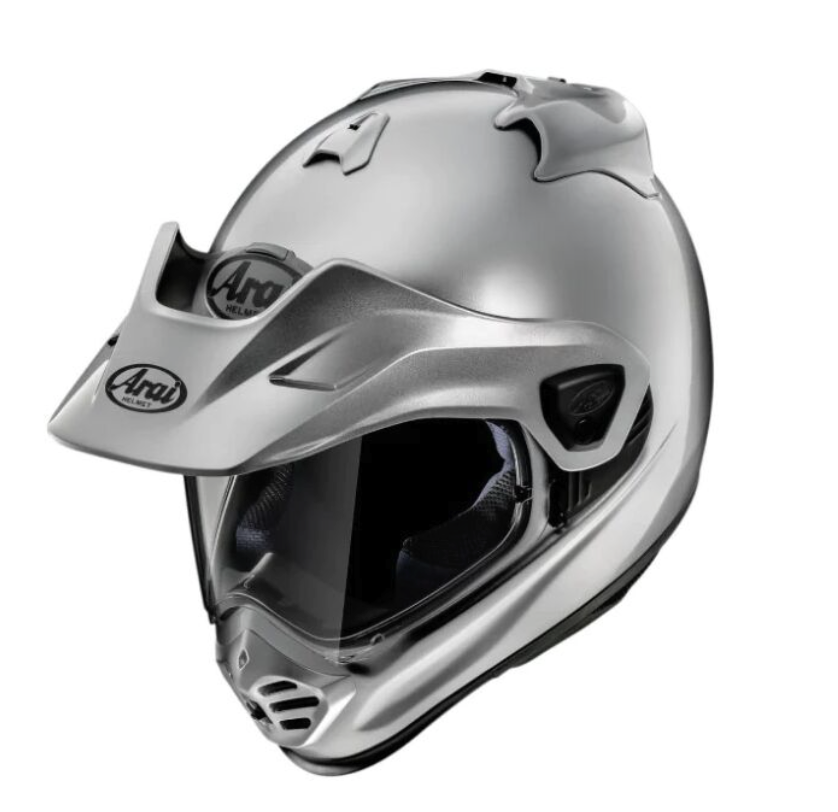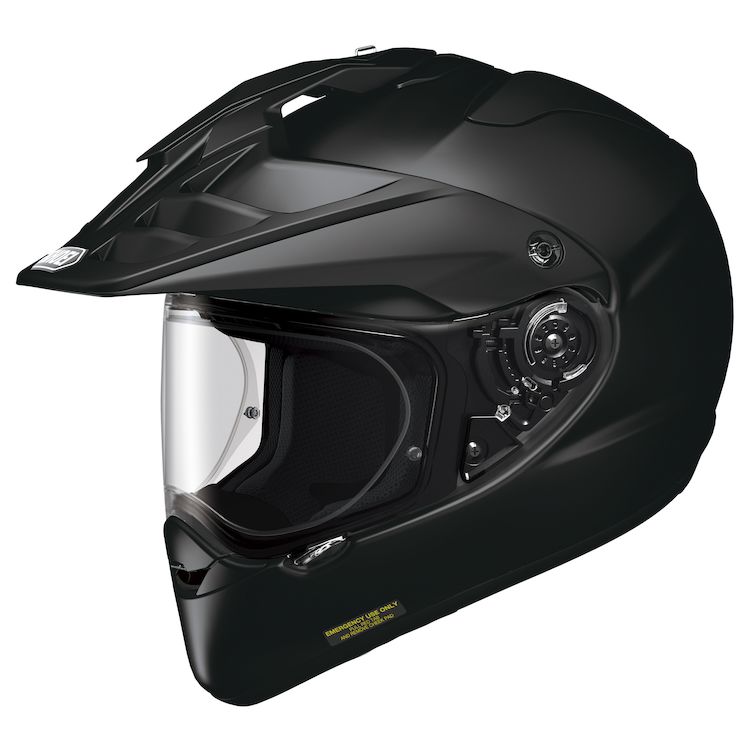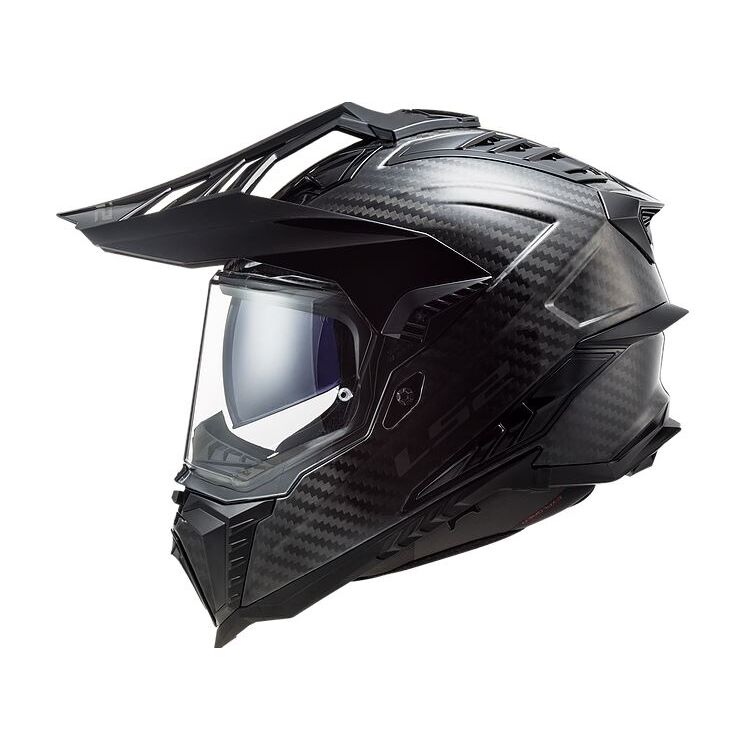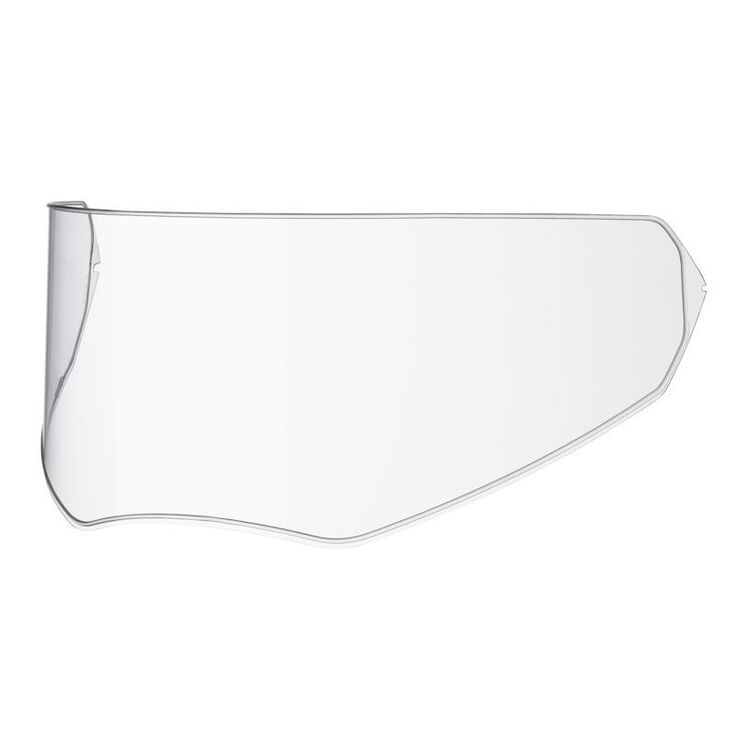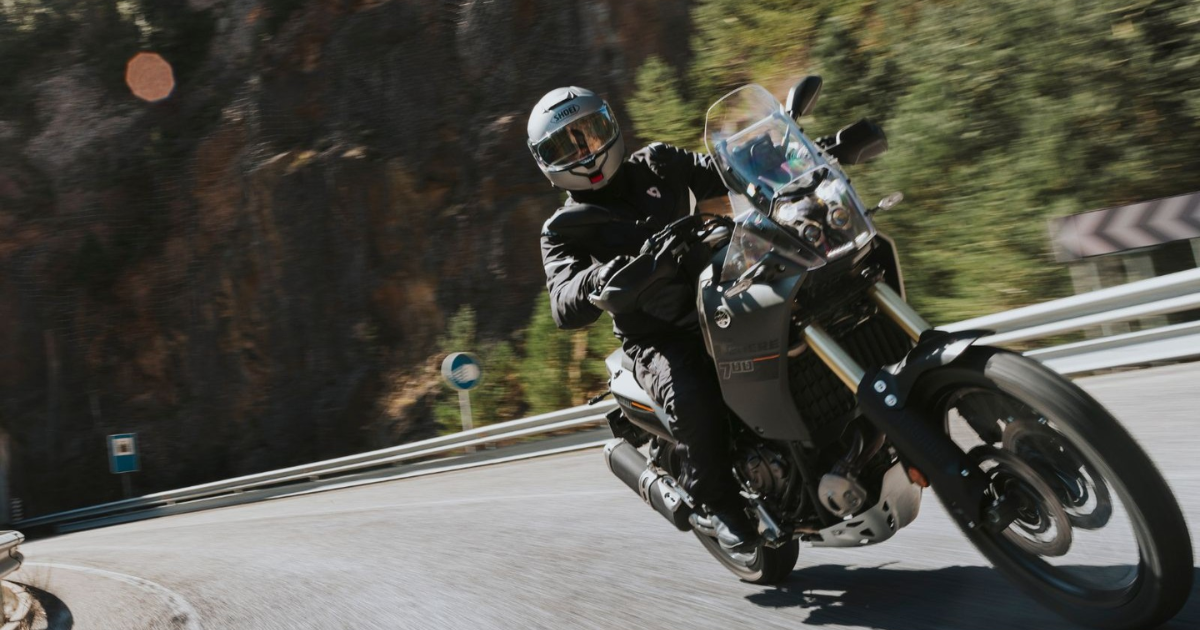
Klim Krios Pro vs Scorpion AT960: Best ADV Touring Helmet?
left for contents
If you’re setting out on long ADV rides, the helmet you choose will shape your comfort, reduce fatigue, and keep you focused mile after mile.
The Klim Krios Pro sits at the premium end with its featherweight carbon-fiber build and photochromic visor, while the Scorpion EXO-AT960 delivers modular practicality and integrated features at a much friendlier price.
In this comparison, we’ll unpack the specs, rider feedback, and overall value so you can decide which one fits your riding style.
If you just want the quick takeaway, jump straight to the quick verdict below.
Quick Verdict
Who should buy the Klim Krios Pro
- Riders who want one of the lightest ADV helmets (~3.3 lb)
- Those willing to pay for premium carbon-fiber construction
- Anyone who values extras like a Transitions visor, clear shield, and Pinlock insert
- Riders who prioritize comfort, airflow, and a Fidlock magnetic strap
- Those who can tolerate more wind noise than a full-face helmet
Who should buy the Scorpion EXO-AT960
- Riders looking for modular versatility at an affordable price
- Those who want a flip-up chin bar and built-in sun visor for convenience
- Anyone comfortable with a slightly heavier polycarbonate shell (~4.1 lb)
- Riders who appreciate comfort and features over featherweight design
- Those willing to accept some wind noise and peak vibration in crosswinds
A do-everything helmet, it's as comfortable on trails as the highway - though not as solid as premium competitors like the Arai XD-5. One of the rare modular ADV helmets, it's also it's DOT and ECE approved.
- Modular chinbar (rare in ADV helmet)
- Removable peak
- Decent airflow
- Drop down sun shade
- DOT and ECE 22‑06 approved
- Susceptible to visor leaks and fogging in heavy rain
- Sun peak vibrates noticeably at highway speeds
The Krios Pro commands roughly US$390 more than the AT960. For that extra money you get a carbon‑fiber shell that saves about 0.7 lb, a photochromic Transitions shield, Koroyd energy management and premium hardware.
If reducing neck fatigue and enjoying premium materials is crucial for multi‑day ADV touring, the Krios Pro justifies the price. If you’re budget‑focused or prefer a modular helmet, the AT960 offers outstanding value.
Spec Showdown: Light vs Loaded
| Specs | Klim Krios Pro | Scorpion EXO‑AT960 |
|---|---|---|
| Weight | ~3.3–3.5 lb (1450 g for size L); among the lightest ADV helmets | ~4.1 lb (1858 g/4.09 lb size M) |
| Fit/Shape | Intermediate oval, sizing runs slightly large (some riders drop a size) | Intermediate oval; modular design may feel tighter with chin bar closed |
| Shell/Materials | Hand‑laid full carbon‑fiber shell; Koroyd energy‑absorbing tubes; clear coat finish | Advanced LG polycarbonate shell with CAD‑refined aerodynamics; multi‑layer dual‑density EPS |
| Safety/Cert | ECE 22.06 & DOT; Koroyd liner manages rotational impact | ECE 22.06 & DOT; modular design with locking chin bar |
| Ventilation/Weatherproofing | One large forehead vent, two chin vents and four exhaust vents; Koroyd tubes channel airflow; effective for hot climates; helmet is not the quietest | Dual‑position mouth vent (defrost & air), top intake vents and rear exhausts; good but not exceptional airflow; EverClear shield resists fog |
| Electronics/Communication | No electronics built‑in; designed to fit the Sena 10U comms system; large speaker cavities | Integrated EXO‑COM port allows drop‑in unit; drop‑down Speedview sun visor for changing light |
| Warranty | 5 years (includes accident replacement program) | 5 years |
| Street Price (typical) | ~US$699–749 as of Aug 2025 | ~US$300–315 as of Aug 2025 |
Who Each Helmet Was Built For
Choose the Klim Krios Pro if…
- You value light weight and premium materials. At roughly 3.3 lb the Krios Pro is one of the lightest adventure lids, and its carbon‑fiber shell with Koroyd liner provides strength and impact management that polycarbonate helmets can’t match. Less weight translates to reduced neck fatigue on multi‑day tours.
- You want a versatile shield system. It comes with a clear visor, a photochromic Transitions visor and a Pinlock insert, covering a wide range of light and weather conditions.
- Ventilation is a priority. Large chin and forehead vents plus the Koroyd core keep air moving through the helmet, which is ideal for hot climates.
- You appreciate premium touches. The Fidlock magnetic buckle and quick‑release visor/peak system simplify swaps between street, adventure and dirt setups.
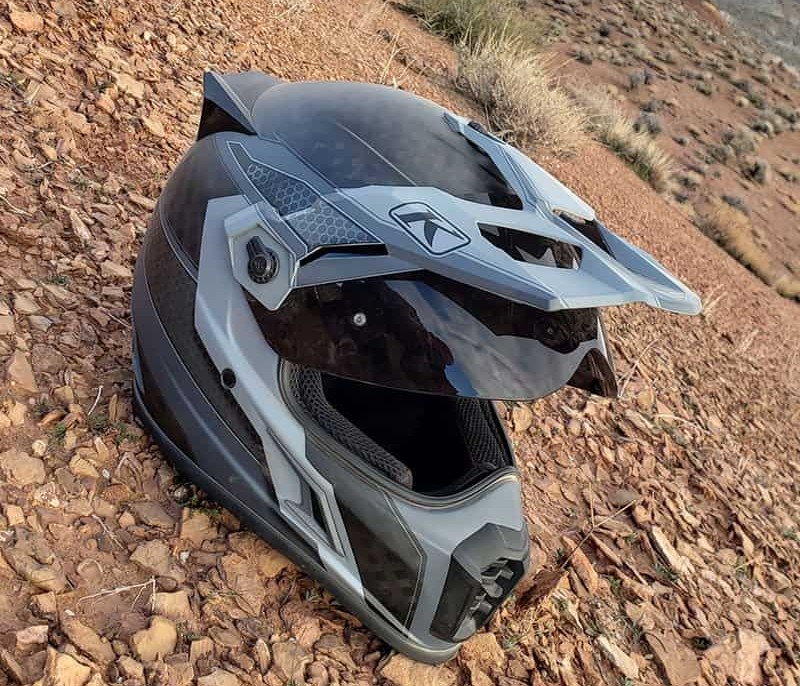
Want more context? See why we named it best ADV in our Lightest Full‑Face Helmets roundup.
Choose the Scorpion EXO‑AT960 if…
- You want modular convenience on a budget. For roughly US$300 you get a flip‑up chin bar, drop‑down sun visor, removable peak and comms port at less than half the Krios Pro’s cost.
- You wear glasses or need instant shade. The Speedview internal visor slides down quickly and the cheek pads accommodate glasses.
- You can live with extra weight. At about 4.1 lb it’s heavier than the Krios Pro but typical for modular helmets.
- You value easy maintenance. The KwikWick liner and KwikFit cheek pads are washable, and the helmet carries a five‑year warranty.
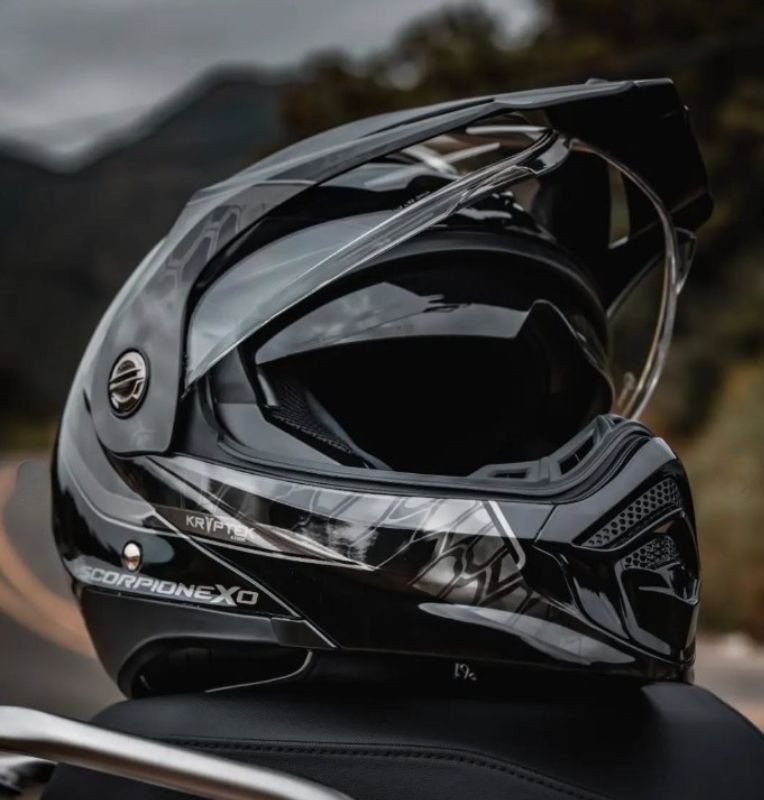
It’s also our top pick for budget ADV comfort in the Most Comfortable Motorcycle Helmets guide.
What Riders are Saying
Across owner reports, the Krios Pro is praised for being exceptionally light, comfortable and cool. Its Koroyd‑lined vents move plenty of air, but that airflow also leads to wind noise; earplugs are common. The included Transitions visor reduces visor swaps but darkens slowly for some. Fit runs slightly large, so many riders size down.
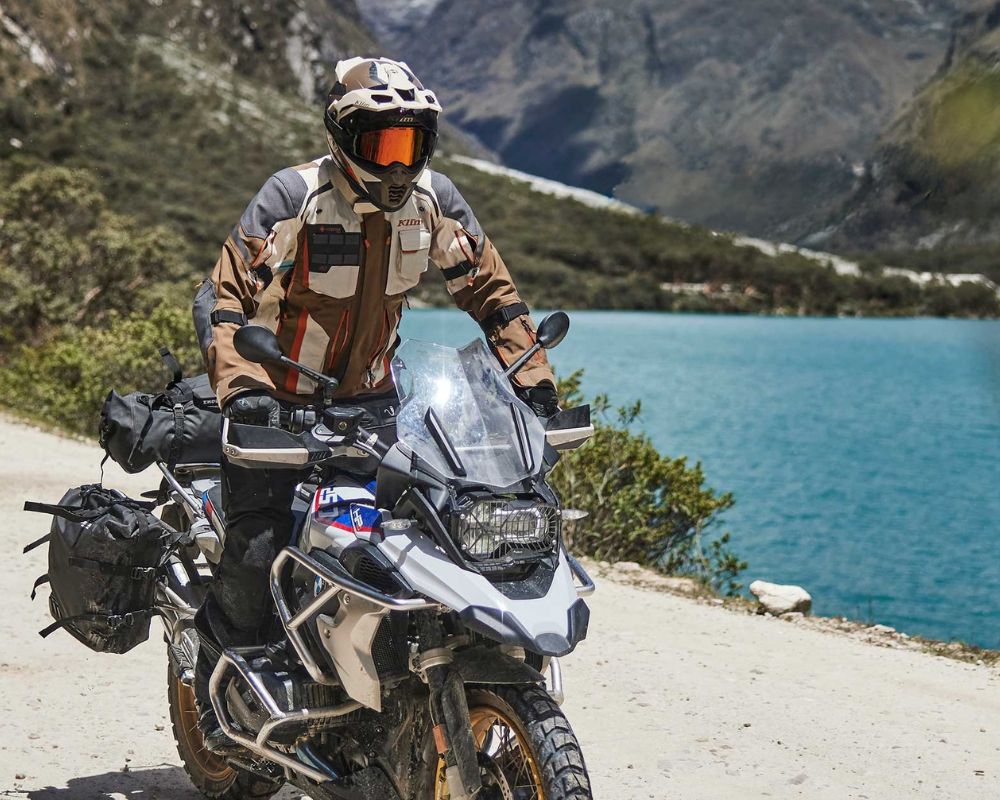
Owners of the EXO‑AT960 appreciate its modular convenience and value. The flip‑up chin bar and drop‑down sun visor make it easy to hydrate or talk at stops, while the KwikWick liner and eyeglass‑friendly cheek pads get good marks. Ventilation is adequate but less forceful than the Krios, and some report peak vibration in crosswinds. Overall, riders feel the AT960 offers a lot of helmet for the money.
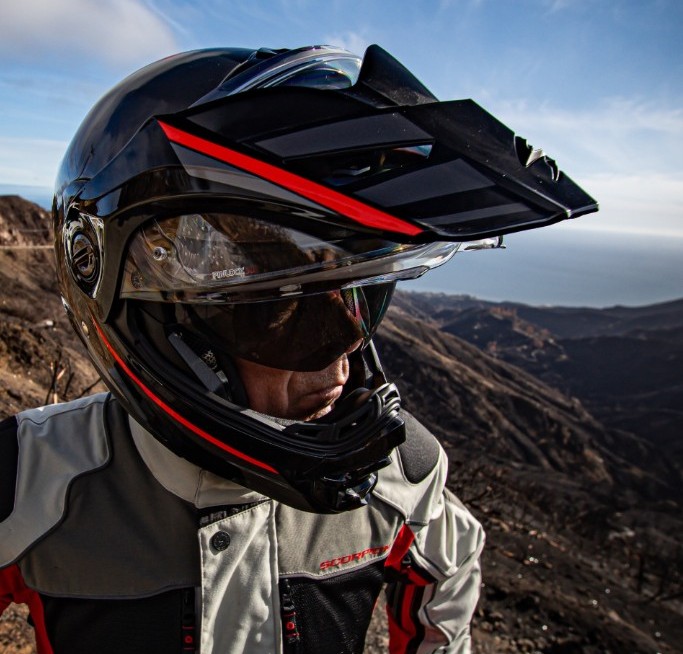
Battle-Tested: Feature vs Feature
Weight & Comfort
This is where the two helmets noticeably diverge. The Klim Krios Pro weighs just 3.3 lb, thanks to its carbon fiber shell and Koroyd liner, while the Scorpion EXO-AT960 comes in at 4.1 lb. That 0.7 lb gap makes a real difference on long ADV rides—especially for riders prone to neck fatigue or those spending hours on the pegs. The Krios Pro feels lighter, more balanced, and less tiring during extended touring, while the AT960 trades that weight for modular convenience and lower cost.
Protection & Safety
Both helmets are ECE 22.06 and DOT certified, meaning they meet rigorous international standards for impact protection. But the way they get there is quite different.
The Krios Pro pairs a hand-laid carbon-fiber shell with a Koroyd liner—a distinctive honeycomb structure made from thermally welded tubes designed to crumple under impact. This technology is borrowed from aerospace and skiing industries, and it excels at reducing rotational and linear impact forces. Compared to traditional EPS, Koroyd absorbs energy more consistently and allows for better airflow due to its open-cell design, which also contributes to the helmet’s low weight.
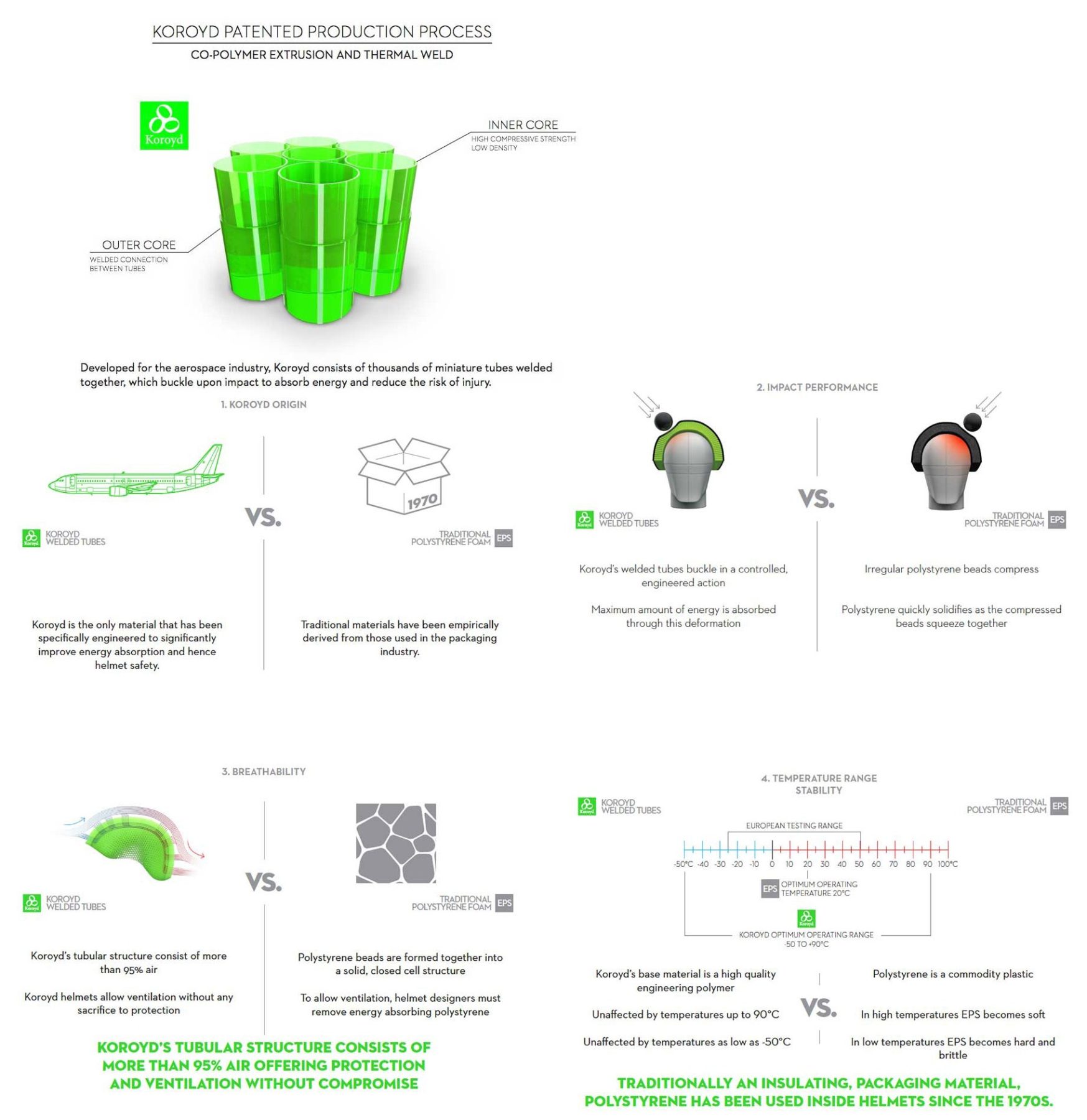
The EXO-AT960 uses a polycarbonate shell and EPS liner—a conventional setup that meets safety standards but lacks the advanced energy absorption or airflow of Koroyd.
Neither helmet is SNELL-rated, but the Krios Pro’s Koroyd liner may offer better energy absorption—especially for ADV or off-road use.
Modularity & Features
The AT960 is a true modular helmet: a lever flips up the chin bar, and a drop‑down sun visor provides instant shade. It also has a port for Scorpion’s EXO‑COM comms unit.
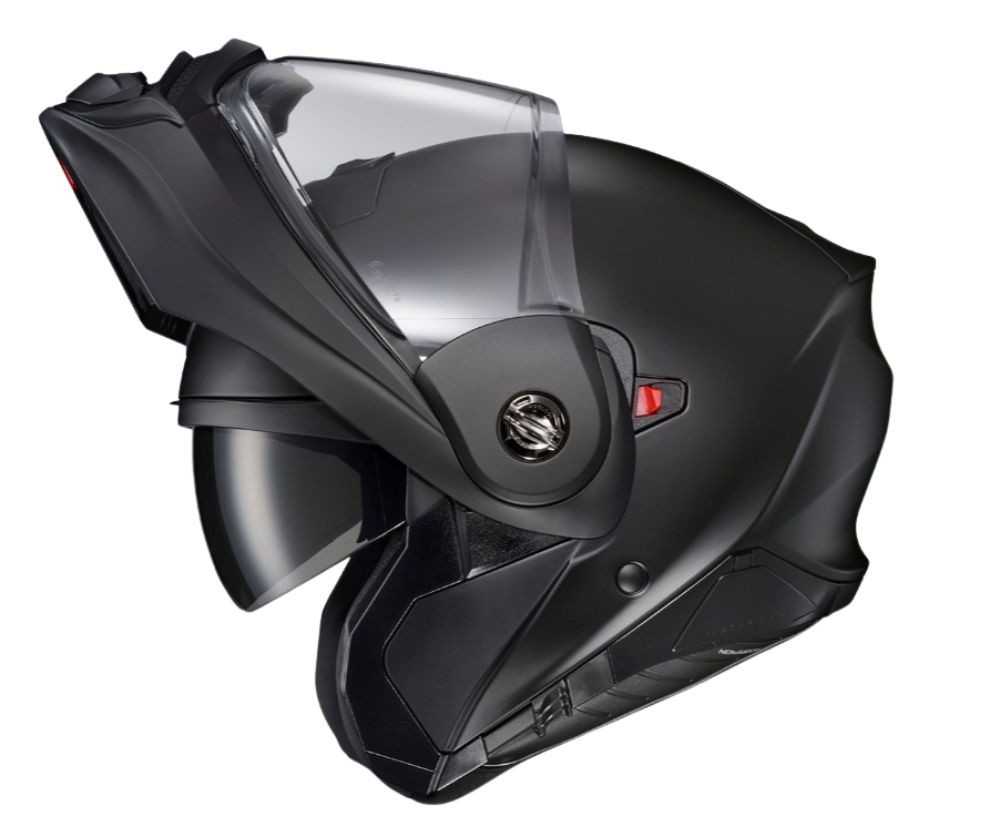
The Krios Pro isn’t modular but offers four tool‑less configurations and includes both clear and photochromic shields with a Pinlock insert. Choose modular convenience or configurable versatility based on your riding style.

Ventilation, Noise & Aerodynamics
The Krios Pro’s generous vents and Koroyd channels keep riders cool even at slow speeds, but the same airflow creates more wind noise; earplugs are recommended. The AT960’s chin and top vents circulate enough air for temperate conditions and its enclosed modular shell is quieter, though still louder than a solid full‑face. Some owners note that the AT960’s peak can vibrate in crosswinds.
Sun Shield & Visor Usability
The Krios Pro ships with both a clear and a Transitions photochromic visor, which automatically adjusts tint based on lighting conditions. It also includes a Pinlock insert for fog-free vision. There’s no internal sun visor, but the Transitions shield handles most conditions smoothly.
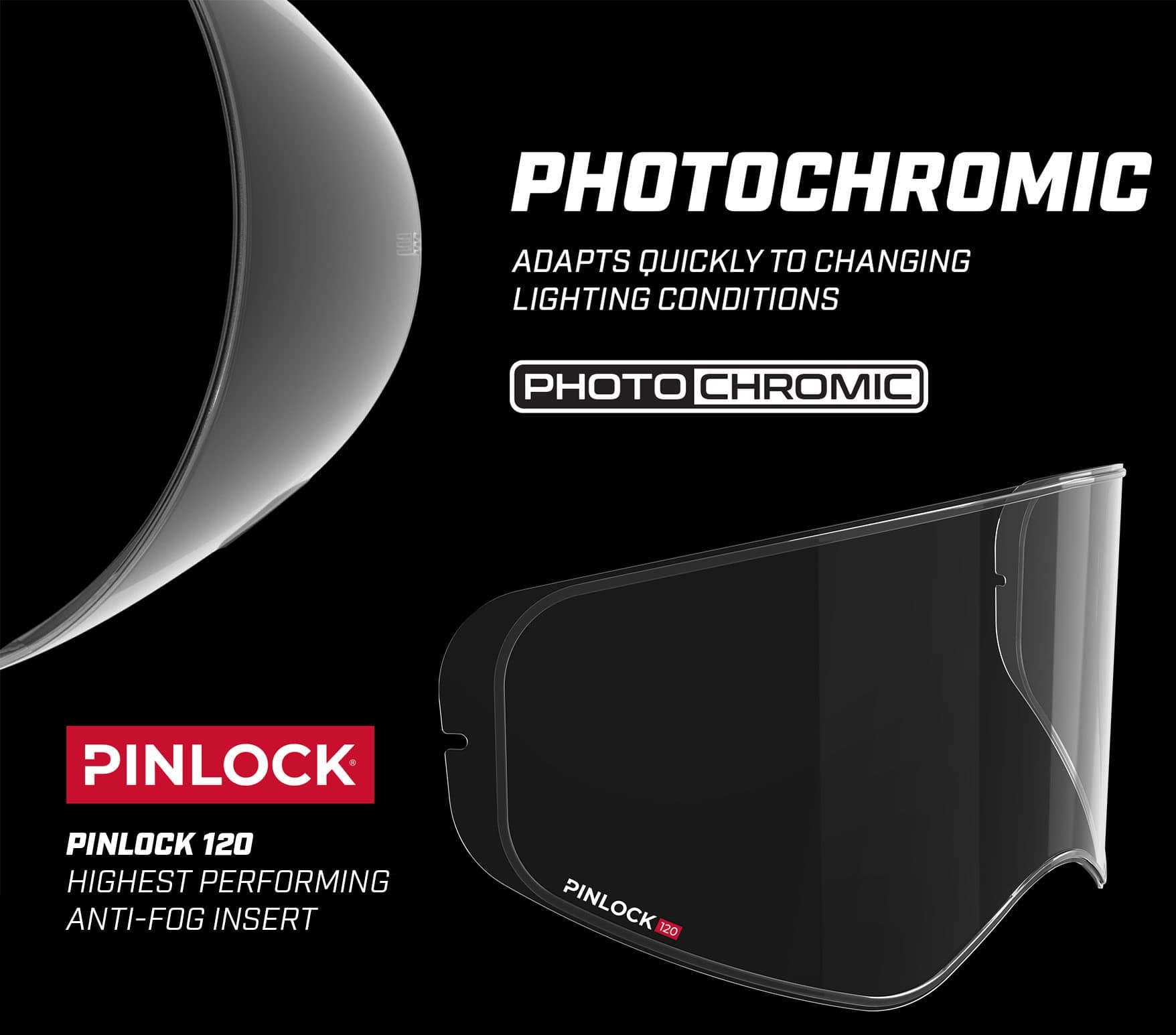
The EXO-AT960, meanwhile, offers a built-in drop-down sun visor that’s operated with a slider on the helmet. While it doesn’t self-adjust like the Krios Pro’s Transitions shield, it gives riders quick control over glare and is especially useful in changing conditions or during stop-and-go traffic.
Comms Integration & Fitment
The Krios Pro is compatible with most universal Bluetooth systems, including Sena 10U and other Sena-style (RHS) mounts. It features internal speaker cutouts and removable cheek pads for clean wire routing—even though it lacks a proprietary comms port. Installation is straightforward using clamp or adhesive mounts.
A sleek, helmet-integrated Bluetooth comms system with a handlebar remote—perfect for clean installation, crystal-clear audio, and mile‑long intercom range.
- Seamlessly hides inside helmets for a clean setup
- Remote control keeps your hands safely on the bars
- Exceptional audio clarity even at highway speeds
- Reliable intercom range up to about one mile in open terrain
- Remote placement can be awkward on crowded handlebars
- FM radio reception is underwhelming in weak signal areas
The EXO-AT960 offers deeper built-in support with a dedicated port for Scorpion’s EXO‑COM system, plus pre-routed channels for speakers and mic. It also accommodates most third-party comms units, delivering a neat and flexible setup either way.
Helmet-integrated system designed for seamless communication and audio on the road.Tailored specifically for ScorpionEXO helmets like the GT930, AT960, and T520,it offers a streamlined fit without external bulk.
- Excellent sound volume and clarity, even at speed—great for music and calls
- Easy install and helmet-ready design that looks built-in
- Intuitive app pairing with firmware updates and settings control
- Mesh intercom range performs reliably with up to four riders
- Mic sensitivity and voice quality reported as weak by some riders
- Limited compatibility—cross-brand intercom linkups not reliably supported
Build Quality & Extras
The Krios Pro feels high-end from top to bottom. Its carbon fiber shell is light and visually refined, and details like the Fidlock magnetic strap and tool-less visor system add real-world convenience. Klim also includes both clear and Transitions visors plus a Pinlock insert—gear that other brands often charge extra for.
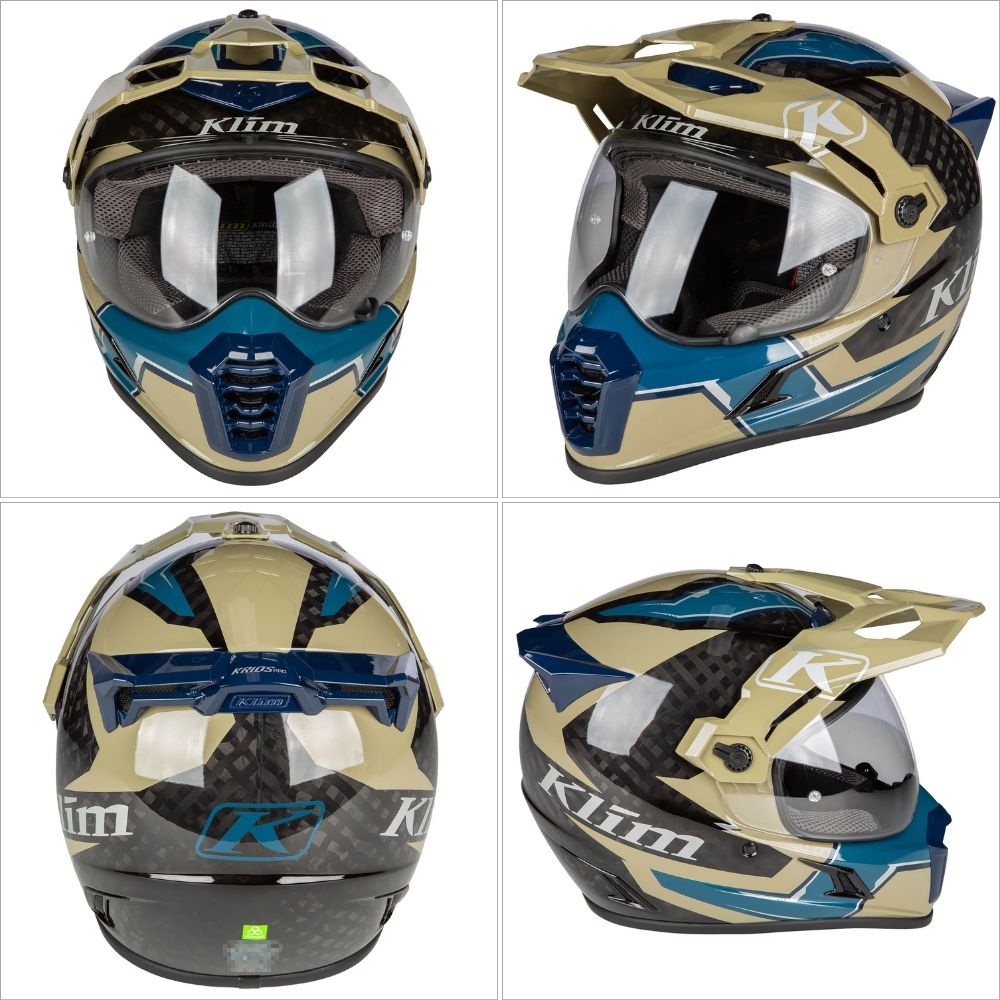
Meanwhile, the EXO-AT960 doesn’t match the premium finish, but it’s well-equipped for the price. The polycarbonate shell feels sturdy, and its KwikWick liner is soft, breathable, and washable. It also features a built-in sun visor and a dedicated comms port.
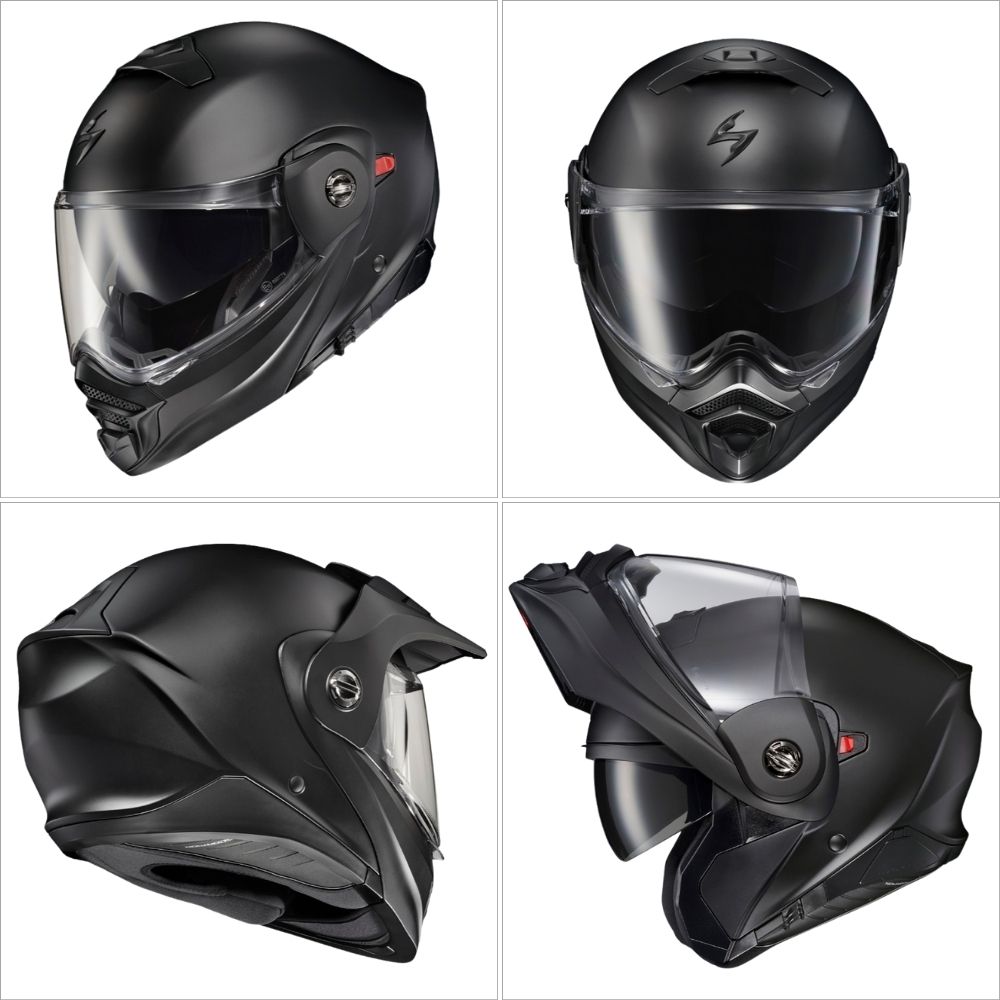
Both helmets include a 5-year warranty, which is rare at this price point.
Bang for Buck: Where Your Dollars Go
The Klim Krios Pro sells for US$700–750, while the Scorpion EXO-AT960 comes in around US$300–315, making the Krios Pro roughly $400 more. For that premium, you get less weight, a carbon fiber shell, an advanced Koroyd liner, and bundled extras like a Transitions visor, a clear visor, and a Pinlock insert—items that add real value for serious ADV riders.
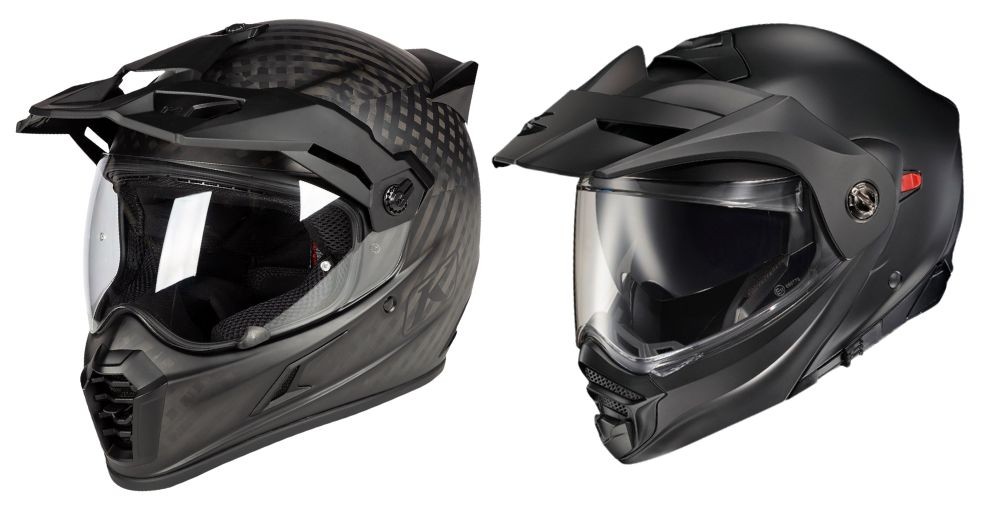
The AT960, while heavier and less refined, still packs in strong features: a modular design, drop-down sun visor, comms port, and a 5-year warranty. It’s a great choice for budget-conscious riders who want comfort and flexibility without overspending.
In short, if lightweight performance and high-end features matter, the Krios Pro earns its price. If not, the AT960 delivers a lot of helmet for the money.
Other Helmets to Shortlist
Arai XD‑5: Premium fiberglass adventure lid (~3.9 lb) with a wide eye port and excellent ventilation; revered for fit and build quality but lacks a drop‑down visor.
The sequel to the legendary XD-4 helmet, this lid improves in every way from its round shell design to its versatility and comfort whether you're thrashing trails or cruising on the highway.
- Quietest ADV helmet
- Removable peak
- Tons of ventilation
- Can use with googles (visor can be removed)
- DOT and Snell approved (ECE in Europe)
- None - one of the best ADV and touring helmets
You can also compare it directly to the AT960 in our Arai XD-5 vs Scorpion EXO‑AT960 comparison.
Shoei Hornet X2: Composite‑shell ADV helmet with good airflow and a Pinlock‑ready shield; not modular, but quieter and mid‑priced between the Krios Pro and AT960.
Shoei Hornet X2 Adventure Helmet delivers the perfect blend of on-road comfort and off-road capability for serious adventure riders.
- Lightweight AIM+ shell for superior protection and aerodynamics
- Advanced ventilation system for optimal airflow in all conditions
- Emergency Quick-Release System for enhanced rider safety
- Runs small, sizing up is recommended
LS2 Explorer Carbon – A lightweight carbon ADV lid (~3.3 lb), packed with premium features like a drop-down sun visor, Pinlock-ready A-class visor, 3 shell sizes, excellent ventilation, and 5-year warranty—offering exceptional value for its price.
Featherlight carbon ADV helmet built for comfort and ventilation, with a dual‑visor setup and premium finish that outpaces its price tag.
- Very light, saving your neck on long rides
- Generous ventilation keeps you cool
- Internal sun-visor and Pinlock included
- Wide eye-port improves visibility and goggle fit
- Pinlock edges may rub slightly in corners
- Wind noise can be noticeable at speed
Frequently Asked Questions
How does wind noise compare for long highway rides?
The Krios Pro isn’t the quietest ADV helmet—its open vent design favors airflow over sound damping, making earplugs a must for highway riding. It’s louder than premium rivals like the Shoei Hornet X2 or Arai XD‑5 but lighter and better ventilated. The AT960 is quieter than many flip-ups but still can’t match the silence of a solid full-face.
Do they work with glasses and comms?
Both helmets accommodate eyewear; the AT960 has glasses‑friendly cheek pads. The Krios Pro is designed for the Sena 10U system; the AT960 has a dedicated EXO‑COM port but can also take universal units.
Do I need to buy extra visors?
The Krios Pro includes a clear visor, a photochromic Transitions visor and a Pinlock insert. The AT960 comes with a clear EverClear shield and a drop‑down sun visor but lacks a Pinlock; you’d need to buy one separately if available.
Fog-proof your ride with this easy-to-install Pinlock MaxVision insert made specifically for the EXO-AT960, giving you clear visibility in varying conditions.
- Creates an airtight double-layer shield for reliable fog prevention
- Full-face coverage area ensures clear vision under all riding scenarios
- Designed for tool-free installation in Pinlock-ready EXO-AT960 shields
- A seamless add-on that elevates daily riding comfort
- Must be paired with a Pinlock-ready faceshield to function properly
- Only available in clear—no tinted or smoke options for glare control
Are modular chin bars as safe as full‑face designs?
The AT960’s chin bar locks firmly and meets the same DOT/ECE standards as the Krios Pro. Modular helmets do have more moving parts and may be slightly noisier, but certification ensures the chin bar stays secure at highway speeds.
Wrapping Up…
If you’re trying to pick between the Klim Krios Pro and the Scorpion EXO-AT960, it really comes down to what you care about most. The Krios Pro is crazy light thanks to its carbon-fiber build and feels every bit like a premium lid. The AT960, on the other hand, gives you flip-up convenience and a ton of features without wrecking your budget.
Think about whether weight and fancy materials matter more to you, or if you’d rather save some cash and get versatility—either way, you’ll end up with a solid helmet for racking up ADV miles.
Lightweight adventure helmet with versatility for street, light adventure, and hard enduro riding. | A do-everything helmet, it's as comfortable on trails as the highway. Shocking for a modular, it's DOT and ECE approved. |
|
|
|
|
Lightweight adventure helmet with versatility for street, light adventure, and hard enduro riding.
- Carbon fiber shell for ultra-lightweight durability
- Quick release (no tools) shield and visor. Supports goggles.
- Big forehead vent
- Transitions photochromic face shield included
- DOT and ECE 22.06 certified
- Noticeable road noise at high speeds
- Transitions lens can be sluggish entering tunnels
A do-everything helmet, it's as comfortable on trails as the highway. Shocking for a modular, it's DOT and ECE approved.
- Easy modular convertibility (peak on or off)
- Generous airflow for comfort on long rides
- Dual ECE 22‑06 and DOT safety certification
- Quiet on the highway for an adventure helmet
- Susceptible to visor leaks and fogging in heavy rain
- Sun peak vibrates noticeably at highway speeds
Related

Carbon Fiber Modular Helmets: Ultimate Flip-Up Lids
Discover carbon fiber modular helmets that deliver flip-up convenience, lightweight strength, and serious protection for every ride.

